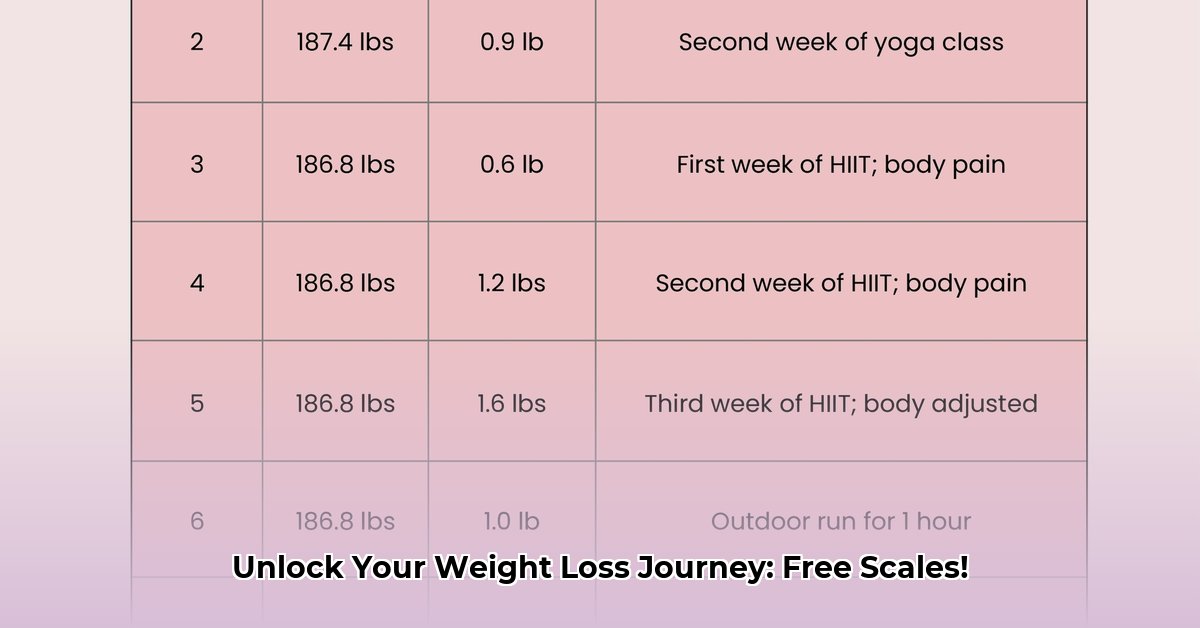
Want to track your weight loss journey without the expense of a new scale? This guide provides practical steps to find free scales, get reliable readings, and incorporate weighing into a holistic weight-management plan. We’ll explore various options, discuss limitations, and offer expert-backed strategies for success.
Where to Find Free Scales
Several locations offer free weighing options, although accuracy and convenience may vary.
- Pharmacies: Large chains like CVS, Walgreens, and Rite Aid sometimes have scales available for customer use. Call ahead to confirm availability as their placement and accessibility can vary.
- Grocery Stores: Some supermarkets, particularly those with in-store pharmacies (like Publix), might offer scales. A quick phone call is always recommended.
- Big-Box Retailers: Stores such as Walmart and Target may have scales, often near fitting rooms. However, these scales are generally less reliable and may not be frequently calibrated.
- Gyms and Fitness Centers: If you’re a member, your gym likely provides scales. This is convenient but limited to members.
- Doctor's Offices: Your doctor's office will weigh you during appointments. While usually accurate, this method isn't practical for daily monitoring.
Remember, while convenient, free scales may not provide the same level of accuracy as dedicated home scales.
The Limitations of Free Scales
Free scales offer convenience but often compromise on precision. Here’s what to expect:
- Inconsistent Calibration: Public scales frequently lack regular calibration, leading to potential inaccuracies. Slight variations are common.
- Variable Results: Several factors can impact readings, including the time of day, clothing, and even the scale's surface. Consistent weigh-in conditions are crucial for reliable trend analysis.
- Privacy Considerations: Weighing yourself publicly may feel less private than at home. This should be factored into your decision-making process when selecting your weighing location.
These limitations highlight the need for a comprehensive weight-loss approach that goes beyond just the numbers on a scale.
Making the Most of Free Weigh-Ins
Even with accuracy limitations, free scales can provide valuable information. Here's how to optimize their use:
- Strategic Timing: Choose less busy times to minimize waits and ensure privacy.
- Consistent Conditions: Weigh yourself at the same time of day, wearing similar clothing, and on the same scale whenever possible. Focus on overall trends rather than daily fluctuations.
- Holistic Tracking: Don't rely solely on the scale. Monitor how your clothes fit, assess your energy levels, and consider taking progress photos. These provide a more comprehensive view of your progress.
Remember, weight is only one factor in overall health and well-being.
Building a Sustainable Weight Management Plan
While free scales offer a cost-effective way to monitor progress, a home scale provides far greater accuracy and consistency over time.
Integrate regular weigh-ins (using a home scale if possible) with a balanced diet, regular exercise, and monitoring of other health metrics for best results. This holistic approach is key to sustainable weight management.
Key Takeaways:
- Free public scales are a cost-effective option for occasional weight monitoring, but accuracy is limited.
- Consistent weigh-ins at the same time of day and under similar conditions are crucial for tracking trends.
- Supplement weight measurements with additional methods (clothing fit, energy levels, photos) for a more comprehensive assessment.
- Consider the limitations of public scales, including accuracy variations and privacy considerations.
- Investing in a home scale provides more reliable and consistent data for long-term weight management.
By understanding the limitations and applying these strategies, you can effectively use free scales as a part of your weight loss journey. Remember, lasting weight management requires a holistic approach that goes beyond just the numbers on the scale.